WAR GRAVE
KENNETH AIRD (grave 91)
SERGEANT
150 SQUADRON
ABOUT MY LIFE
Born: 4th March 1909
Died: 30th May 1942
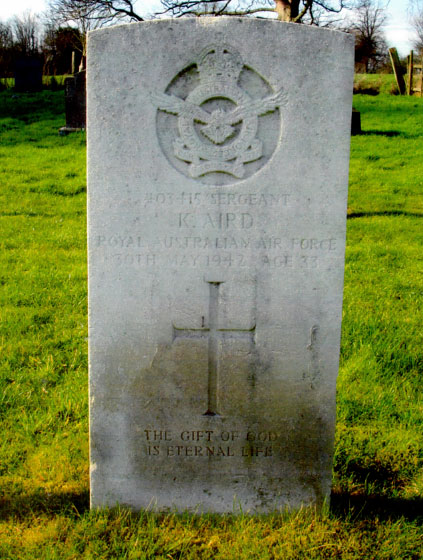
I was born in Bangor, Northern Ireland before I moved with my parents, Dr Ivie and Ella Aird, to Bondi Junction, New South Wales in Australia. I was married to Marcia Clarice Aird.
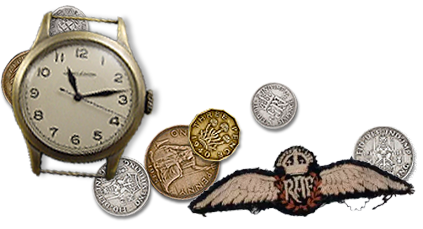
MY AIRCRAFT
The Vickers Wellington was the brainchild of Barnes Wallis whose invention of the bouncing bomb would later forge an eternal bond to RAF Scampton. The Wellington was designed using a revolutionary geodetic lattice construction, this lattice work was covered in fabric and produced a very light, yet incredibly strong airframe.
The Wellington first flew on 15th June 1936 and continued in production throughout the war, earning the distinction of being the only British bomber to do so.
In total, 11,461 Wellingtons were made, earning it the further distinction of the most produced British bomber, with the last one rolling off the production line in October 1945. The last flight of the Wellington in RAF service happened in 1953.
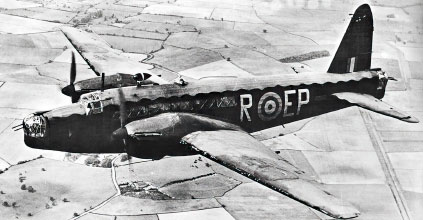
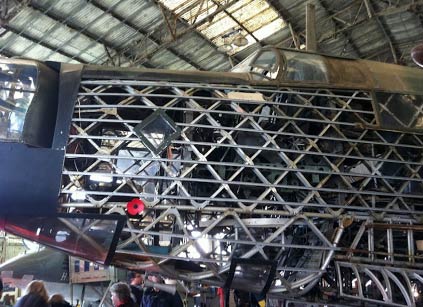
The Wellington’s Geodetic construction.
MY ROLE
I was an air gunner on this aircraft.

RAF Air Gunner Training.
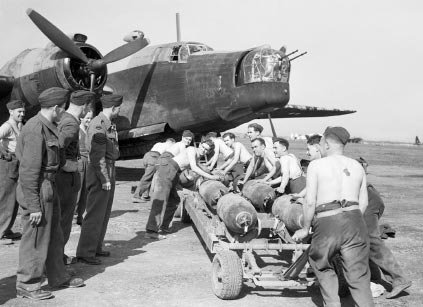
MY SQUADRON
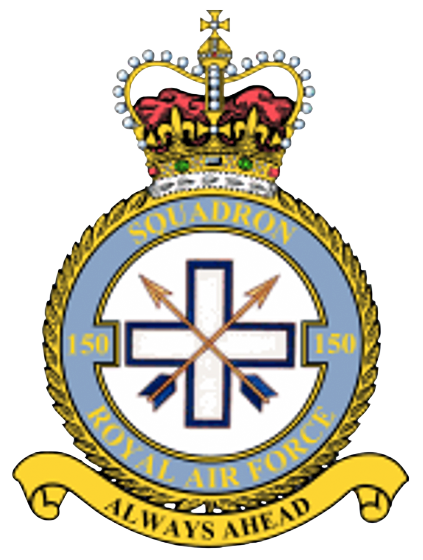
Motto: Always Ahead
The squadron was formed in Greece in the very latter stages of World War One.
In April 1918, only to be disbanded a short while later on 1919 after the end of hostilities. The squadron was reformed in 1938 flying the Fairey Battle and it is with these virtually obsolete aircraft with which they tried to resist the German invasion of France, before being evacuated back to England in May 1940.
In October 1940, they re-equipped with the Vickers Wellington at RAF Newton, before moving to RAF Snaith in July 1941. The Squadron was moved to the Mediterranean theatre of operations in December 1942, before returning in November 1944 to fly the Lancaster from RAF Fiskerton in Lincolnshire.
The squadron disbanded again at the end of the war, but had a brief re-emergence between 1959 and 1963 as a Thor ballistic nuclear missile squadron.

A Fairey Battle of 150 Sqn, shot down in the Battle of France.

A Thor nuclear missile, as used by 150 Sqn 1959-63.
THE ACCIDENT
When the curtain was drawn back in the briefing room to reveal our target and the scale of the operation, it was a truly an awe inspiring moment. This was to be the first of Air Marshal Harris’s thousand bomber raids. To achieve this many aircraft in a single raid, every available aircraft needed to be used, even trainee crews were brought into the action.
Cologne was selected as the first German city to see the effects of 1000 heavy bombers. In the words of Air Marshal Harris:
“The Nazis entered this war under the rather childish delusion that they were going to bomb everyone else and nobody was going to bomb them. At Rotterdam, London, Warsaw, and half a dozen other places they put their rather naive theory into operation. They sowed the wind, and now they are going to reap the whirlwind.”
Our Wellington Mk III X3448 took off from RAF Snaith in Yorkshire at 23:15hrs, bound for Cologne. But something went wrong and we needed to return early, so just 3 hours later, we were back over the skies of Lincolnshire. At 02:15hrs our aircraft crashed close to Mottram’s Farm near Faldingworth, killing all 6 crew instantly. It was never discovered why we crashed, but it was thought that the sudden failure of one of the engines could have caused the loss of control of the aircraft.
The raid itself destroyed 600 acres of Cologne and caused 5000 casualties. Despite the loss of 39 aircraft or 4% of the bomber force, the raid was considered a success, vindicating Harris’ faith in strategic bombing. Winston Churchill said of the raid:
“This proof of the growing power of the British bomber force is also the herald of what Germany will receive, city by city, from now on.”
CASUALTIES – 30TH MAY 1942
Pilot Officer Patrick Murphy (Pilot) (Buried Nunhead (All Saints) Cemetery)
Sgt Roy George Peverill RAAF (Pilot) (Buried Scampton) MORE
Sgt George Lawson Mustoe RAAF (Observer) (Buried Scampton) MORE
Sgt Joachim Charles Dean (Wireless Operator/Air Gunner) (Buried Southborough Cemetery)
Leonard Beck (Wireless Operator/Air Gunner) (Buried Manchester – Philips Park)
Sgt Kenneth Aird RAAF (Air Gunner) (Buried Scampton)
Where Next
Visit the Australian war memorial in Hyde Park, London.

ON THIS DAY IN WORLD WAR TWO – 30TH MAY 1942
In Libya, Rommel pulls his forces back to an area known as the cauldron, a small area between Sidra and Aslagh.
In Pearl Harbor, Hawaii, Following hurried repairs, the USS Yorktown sets sail for Midway. Where the aircraft carrier will later play a decisive role.
